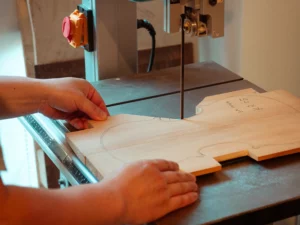 Tijuana EDC was honored to participate in the 5th meeting of the Mexico-US Entrepreneurship an Innovation Council –MUSEIC- that took place in August at the Bit Center, Tijuana.
Tijuana EDC was honored to participate in the 5th meeting of the Mexico-US Entrepreneurship an Innovation Council –MUSEIC- that took place in August at the Bit Center, Tijuana.
The MUSEIC initiative was created three years ago under a framework of high-level economic dialogue with the objective of increasing regional competitiveness by strengthening the North American high-impact entrepreneurship ecosystem.
This year, the meeting was focused on establishing mechanisms to ensure the continuity of MUSEIC beyond changes in administration happening in the United States and Mexico.
The two-day event reunited council and subcommittee participants as well as entrepreneurs and business leaders from both sides of the border. Among participants where Enrique Jacob, president of the National Entrepreneurship Institute; José Paulo Carreño King, undersecretary for North America in Mexico’s Ministry of Foreign Affairs; Thomas Guevara, deputy assistant secretary for regional affairs in the U.S. Commerce Department’s Economic Development Administration; Jorge Astiazarán, Major of Tijuana, and William Ostick; U.S. Consul General in Tijuana.
During the second day of the meeting. Tijuana EDC president, Cristina Hermosillo, participated in the “Getting to Know the CaliBaja Entrepreneur Ecosystem” panel discussion on fostering links between US and Mexico tech entrepreneurs, innovators and manufacturers.
Hermosillo indicated that conditions are right in CaliBaja to foster binational co-funded projects, and mentioned some examples of cross border co-innovation such as 3DR, ThermoFisher, Plantronics, and Tap to Eat.
“Proximity is our natural advantage,” said Hermosillo. “Tijuana is only a 2-hour flight from the most important tech hub, Silicon Valley. Local engineers have manufacturing expertise that spans 50 years and are knowledgeable of the best manufacturing practices in the world. We are not only bilingual, but also talk business, we easily adapt to U.S. and others business cultures.”
The CaliBaja region has pioneered the efforts in mapping binational capabilities available in Baja California and Southern California for investment promotion. MUSEIC, taking this example recently unveiled Mexico´s and U.S. National Cluster Maps that identify geographic concentrations of interconnected companies, suppliers, service providers, and associated institutions that are present in the U.S. and Mexico. These maps identify economic interconnectivity for more effective trade and investment.




